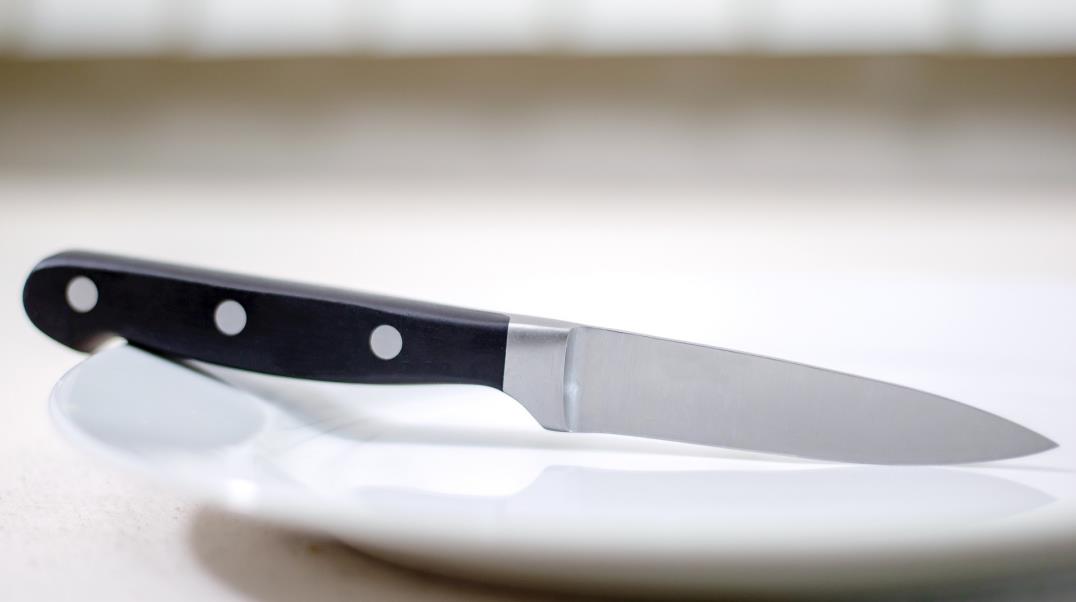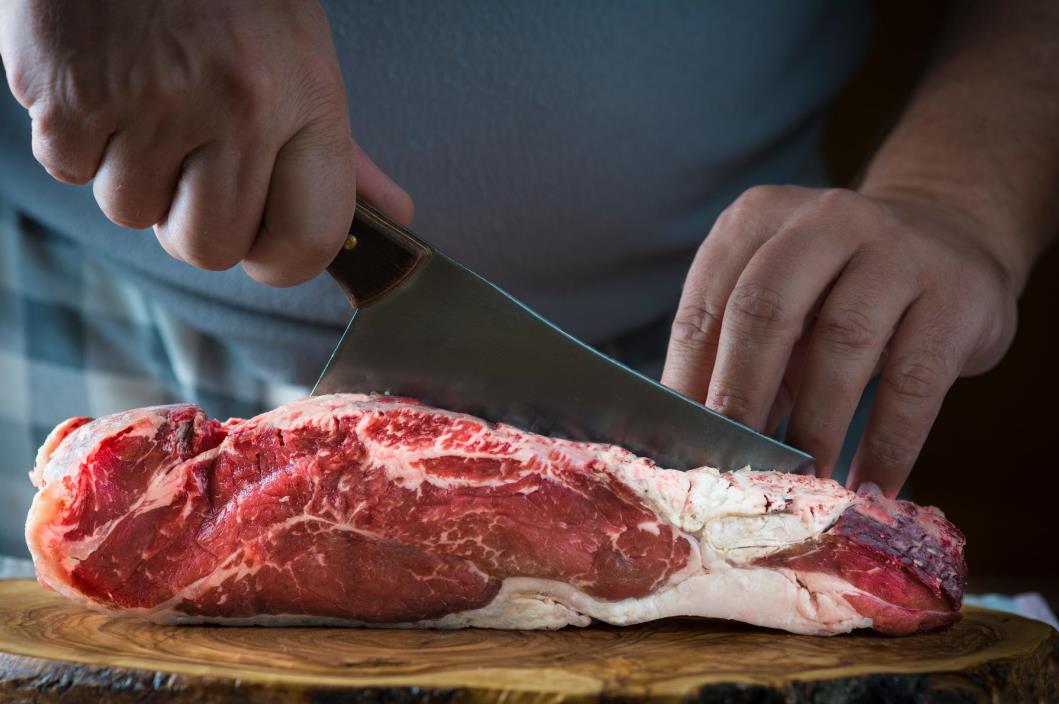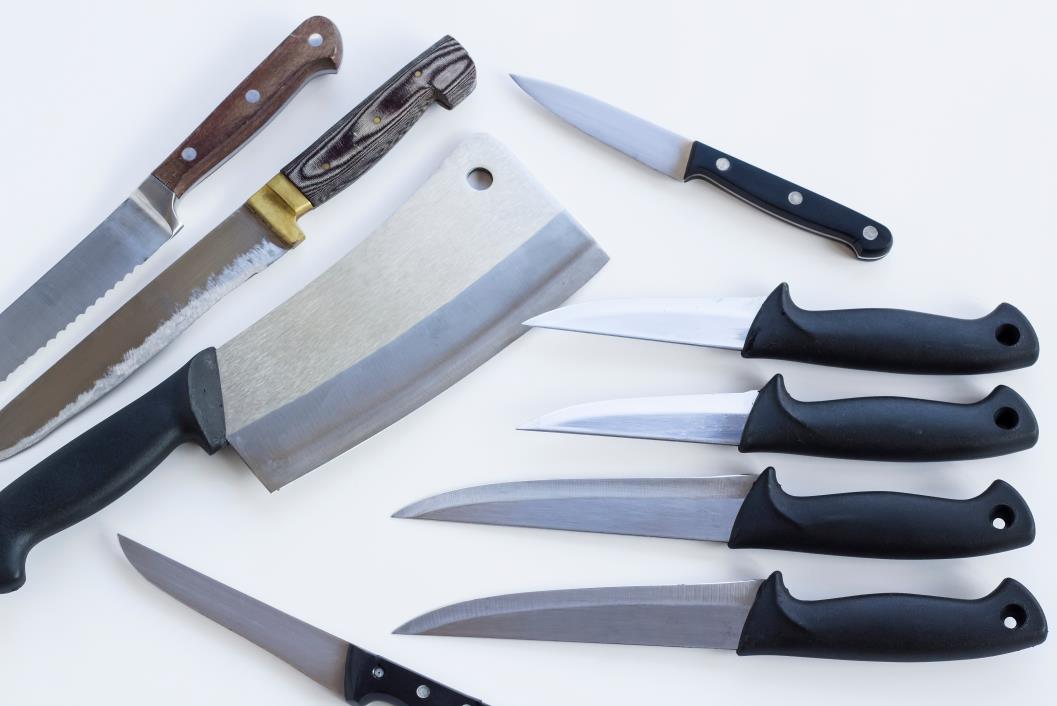154CM steel hasn’t been around for very long. The aerospace-grade material first appeared around the 1950s and very soon was used to make cutlery. Today, this metal is as popular as ever and is still seen as a solid choice for kitchen and outdoor knives. So what on earth is this steel and how does it compare to other similar alloys?
Above all, 154CM is a grade of stainless steel. Yet, it is also classed as high-carbon steel thanks to the large amount of carbon within its structure. In addition, 154CM steel is closely related to the well-respected 440C steel grade. The key difference is that 154CM contains significantly more molybdenum.
The mechanical properties of this steel are considered to be strong ― it is most renowned for its combination of toughness, edge retention and corrosion resistance. This is hardly surprising since steel used to make airplane parts can easily survive in a kitchen.
That was a brief summary of this metal, its history, and its strengths. Now we will show you the chemical composition and properties of the steel in more detail so you know what to expect if ever you purchase a 154CM knife.
Table of contents
Background: what is 154 CM steel?

154CM steel was developed in the United States by Crucible Industries in 1959. The company is renowned for producing high-end steel for aerospace, automotive, and industrial applications.
The name 154CM refers to the metal’s composition: 15% chromium and 4% molybdenum (see composition below). It has a similar structure and properties to the more famous 440C stainless steel alloy.
154CM steel composition
- Carbon (C): 1.05%
- Chromium (Cr): 14.00%
- Molybdenum (Mb): 4.00%
- Manganese (Mn): 0.50%
- Silicon (Si): 0.30%
As with any steel, the main building block here is Iron (Fe) which comprises over 80% of the alloy’s weight. You could say that over 98% of this steel consists of just 3 key ingredients: iron, chromium, and molybdenum.
Pure iron is too soft to be useful in modern objects, so adding carbon is crucial for increasing the metal’s hardness and strength. The quantity of 1.05% might not sound like much, but it is enough to make this a high-carbon steel.
Having carbon in its structure is beneficial because it prevents the steel from wearing down or scratching excessively. However, the amount of carbon cannot be too high as this may make the material excessively brittle.
The next vital ingredient is chromium. Having more than 10.5% of chromium in its structure means that 154CM is classified both as stainless steel and high-carbon steel.
Chromium in steel gives it a distinct silvery shine but is more than just a decoration. It protects against the oxidation of iron atoms on the metal’s surface and therefore largely prevents rusting. Note that the 14% of chromium differs slightly from the 15% that its name suggests.
Molybdenum offers many different benefits. Firstly, it can assist the chromium by adding to the steel’s anti-rust properties. Secondly, this element will improve the alloy’s toughness and tensile strength. A potential weakness of stainless steel is its softness. Being able to harden the surface of a 154CM knife with heat treatments is important for its edge retention over time.
The amounts of manganese and silicon are minor, though both help to increase the steel’s hardness.
154CM steel characteristics
Hardness
Crucible Industries state that the Rockwell hardness of 154CM steel can reach between 60 and 61. This is a very impressive rating and puts the metal in the same league as high-end carbon steel knives. Thanks to the high proportion of carbon in 154CM, blades made from this metal have good wear resistance. Such a blade has good stiffness too, so is unlikely to flex while you use it.
Toughness
If a steel blade contains too much carbon, it may be vulnerable to chipping or cracking. This is not the case with 154CM ― like other stainless steel types, it offers good toughness. Hence, these blades can absorb large amounts of energy and could even be dropped without breaking. This is partly thanks to the molybdenum within the alloy.
The developer of this material manufactures metals for airplanes and cars so naturally, their products can survive heavy impacts.
Corrosion resistance
The main advantage of stainless steel over pure carbon steel is corrosion resistance. 154CM performs well in this regard. Of course, without care and attention, even a stainless steel blade can rust over time. However, you do not have to worry much about rust in the short term with 154CM steel ― the high chromium content offers lots of protection.
Edge retention
Thanks to its hardness rating of over 60, you can expect your 154CM knife to hold an edge for a long time. 154CM can match the best pure carbon steel in this department. This is good news for chefs who want to focus more on cooking and less on maintenance
Ease of sharpening
Due to the excellent edge retention, it is a bit tricky to sharpen a 154CM blade. The carbon plus silicon and manganese in the metal’s structure increase the hardness. Yet with practice, sharpening 154CM is not too difficult and you won’t have to do so very often.
How does 154CM steel perform as a (kitchen) knife?

Like other types of high-carbon stainless steel, 154CM seems to have a good balance of corrosion resistance, toughness, and hardness. These characteristics make it a very strong choice for any type of knife. Whether you are chopping wet ingredients in a kitchen or trying to hunt fish in a river, the anti-rust properties will keep the blade in great condition.
The toughness of 154CM is handy outdoors ― if you have to chop wood for a fire, you can be sure that the blade won’t crack. Likewise, when cooking at home or in a restaurant, a 154CM knife will be able to chop through tough cuts of meat without bending and snapping.
Finally, this type of knife looks and works great in any setting and does not need much special care. It will keep its sharp edge and shiny finish long after you purchase it.
How to care for 154CM steel
With a stainless steel knife, your top priority should be protecting the edge. Although 154CM has better mechanical properties than cheaper stainless steel, you should not take any chances. Never clean this knife in a dishwasher or store it with other cutlery ― doing either may blunt or deform the edge. Also, the high temperatures and pressures inside a dishwasher could warp the blade.
All of this damage can be avoided by hand-washing the knife. Do so using hot water plus a sponge and dish soap. The chromium in the steel will mostly protect it from rusting, but you can hand-dry it as well to be sure. As for storage, the best choices for stainless steel knives include magnetic racks, knife sheaths, and a knife block.
For an in-depth discussion about knife care, feel free to read some of our other posts.
How does 154CM compare to other similar steels?

154CM vs 440C
We mentioned at the start that 154CM is like a modification of 440C stainless steel. 440C is considered to be one of the best stainless steel grades for kitchen knives. The carbon content of both metals is more or less the same, and both have small amounts of silicon and manganese to boost the hardness. 440C has a slightly higher chromium content of 16-18% compared to 14% for 154CM, yet the molybdenum in 154CM helps to improve its corrosion resistance.
Overall, both alloys are similar and very popular choices for outdoor knives.
154CM vs 1095
With 0.9-1.03% of carbon in its structure, 1095 steel is also similar to 154CM. 1095 is the most desirable of the pure-carbon alloys ― due to its excellent hardness, a knife with this metal can hold its edge for very long. However, this steel lacks chromium, so is more vulnerable to rusting.
1095 steel isn’t as tough as 154CM, so it’s a more popular choice for kitchen knives rather than hunting knives.
154CM is great for outdoor knives
But for optimum sharpness and precision, you should definitely opt for carbon steel. The blade of a good carbon steel knife will stay sharp for a long time and will stay firm while you cut.
Beginners and professionals who wish to experience the smooth performance of carbon steel can find their next knife in our store.









